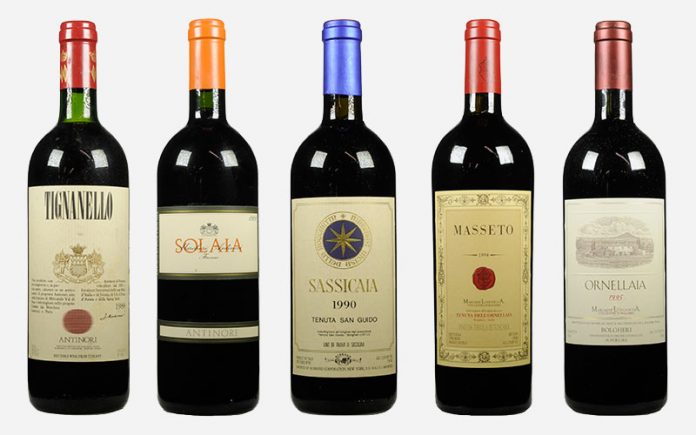While many Super Tuscans may indeed be big, full-bodied, and powerful, they are not a band of Italian super-heroes dressed up in capes, flying faster than a speeding bullet over the Tuscan landscape, stomping out evil wherever they go.
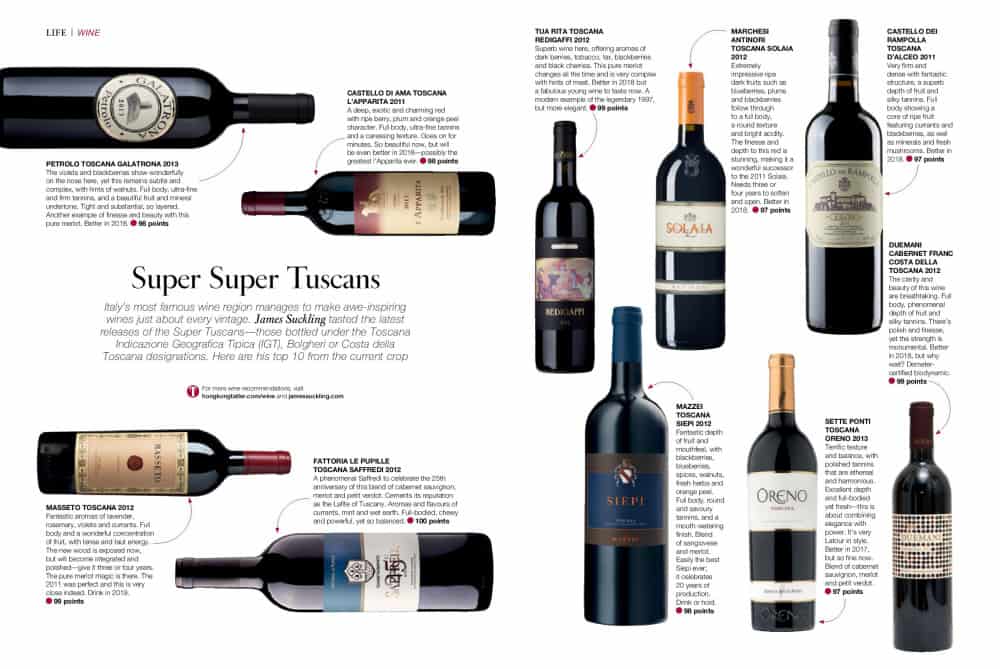
The term ‘Super Tuscan’ is an unofficial name given to a special group of Italian wines made in the beautiful and historic wine region of Tuscany.
‘Super Tuscans’ only started to garner massive attention in the 1970s after Sassicaia and Tignanello first burst onto the market. These two wines are still important Super Tuscan names, but they have been joined by a number of other high quality wines made by like-minded producers.
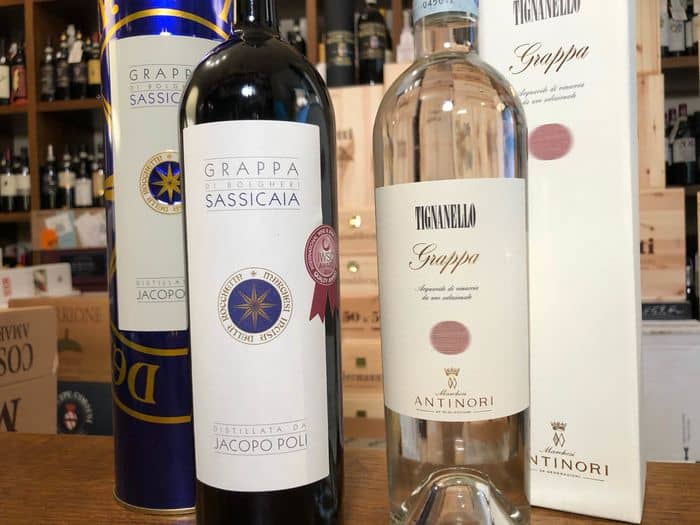
Italian Wine Laws
Italian wine laws were put into place in the 1960s and were modelled after the French AOC system. There are 4 levels of wine in Italy, although recent European Union laws may mean a change (for the purposes of this article we will stick with the old system). Italian wines can be categorized as Vino da Tavola at the lowest level, then IGT (Indicazione Geografica Tipica, introduced in 1992), followed by the highest quality levels of DOC (denominazione di origine controllata), and DOCG (denominazione di origine controllata guarantita).
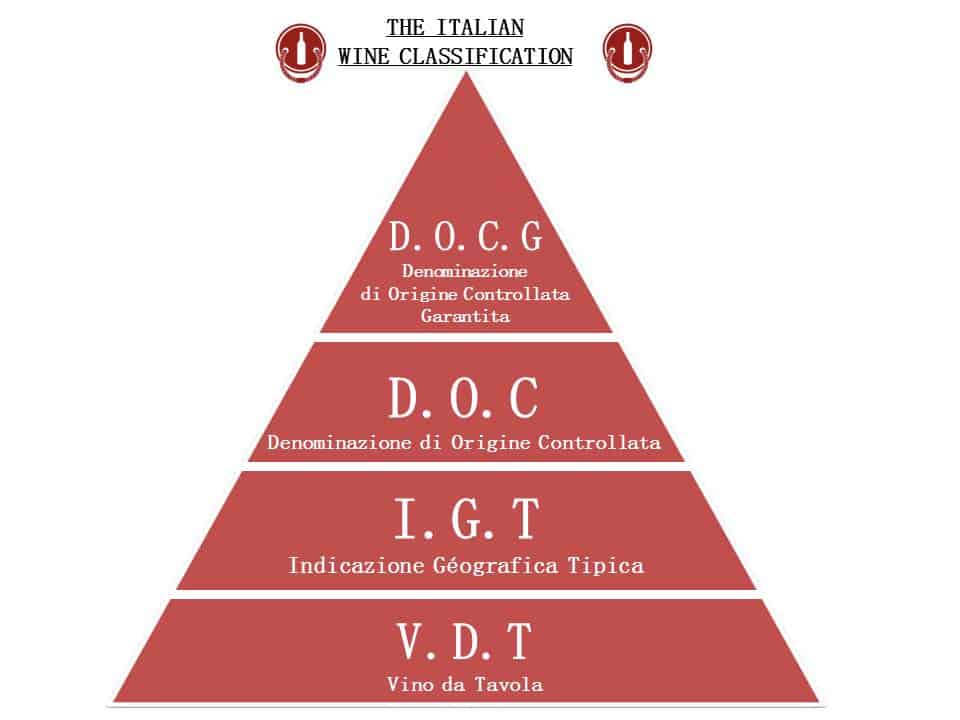
This is really not as simple as it sounds. There are over 500 named wines in the categories of IGT, DOC, and DOCG. The names can indicate a place, such as Toscana; a grape and place, such as Verdicchio dei Castelli di Jesi; or a style and place, such as Rosso di Montalcino.
The rules governing the DOC and DOCG wines are very restrictive, regulating the geographical origin, the volume of grapes, the percentage of wine made from the grapes, grape varietals allowed in the wine, winemaking technique, ageing requirements, and many other factors.
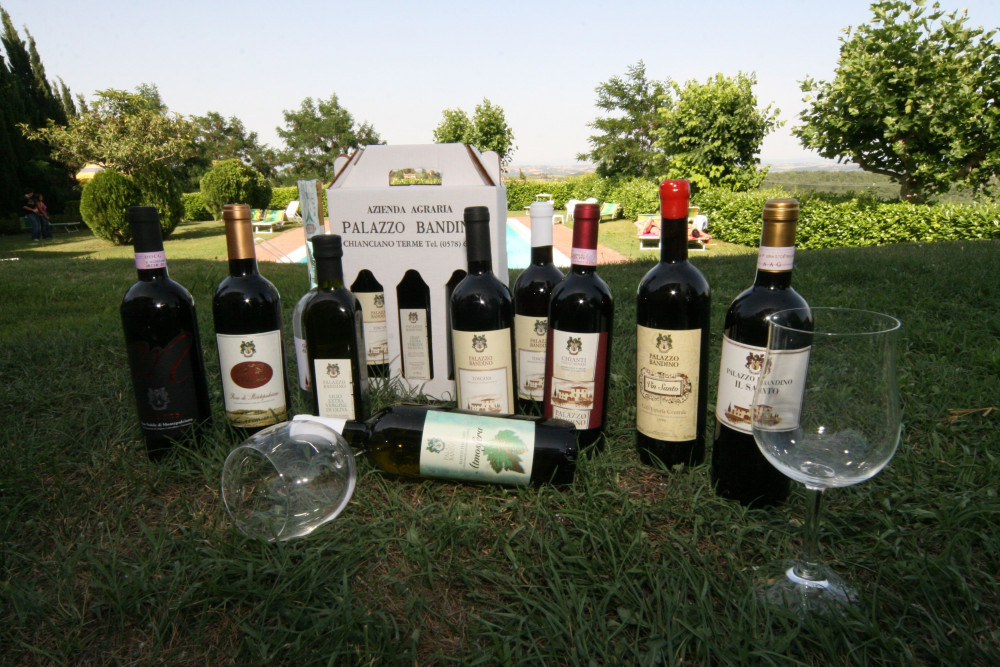
In many cases ‘international’ grape varieties, such as Cabernet Sauvignon, are not permitted. There is little room for experimentation or deviation from traditional practices.
Many innovative winemakers believed the rules essentially hindered their efforts to make top-quality Tuscan wines. These maverick winemakers, dedicated to making the best wine possible, began breaking the rules, creating a whole new category of Italian wine – the ‘Super Tuscan’.
Sassicaia – The Beginnings of the Super Tuscans
It all began back in the 1940s when Marchese Mario Incisa della Rocchetta, a vine grower from Piedmont, moved to the Tuscan estate his wife had inherited. His wife is the aunt of Piero Antinori and a member of perhaps the most famous wine family in Italy.
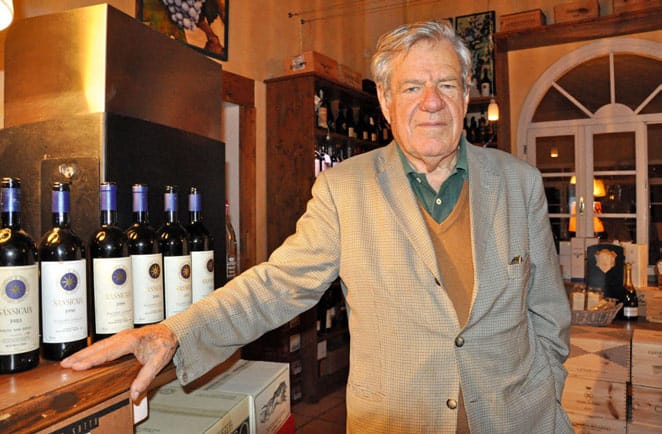
Mario, being a Bordeaux buff, noticed that the soils of the estate in the coastal town of Bolgheri had similar gravelly soils to those in Bordeaux, and that the proximity to the sea gave cooler summers and warmer winters than farther inland – excellent conditions for grape growing, especially the traditional Bordeaux varieties. He proceeded to plant Cabernet Sauvignon and make wine using traditional French techniques.
At first, the French-style wines made by Mario were not available commercially, but were enjoyed by family and friends, sometimes being sold by the barrel or individual bottles to acquaintances.
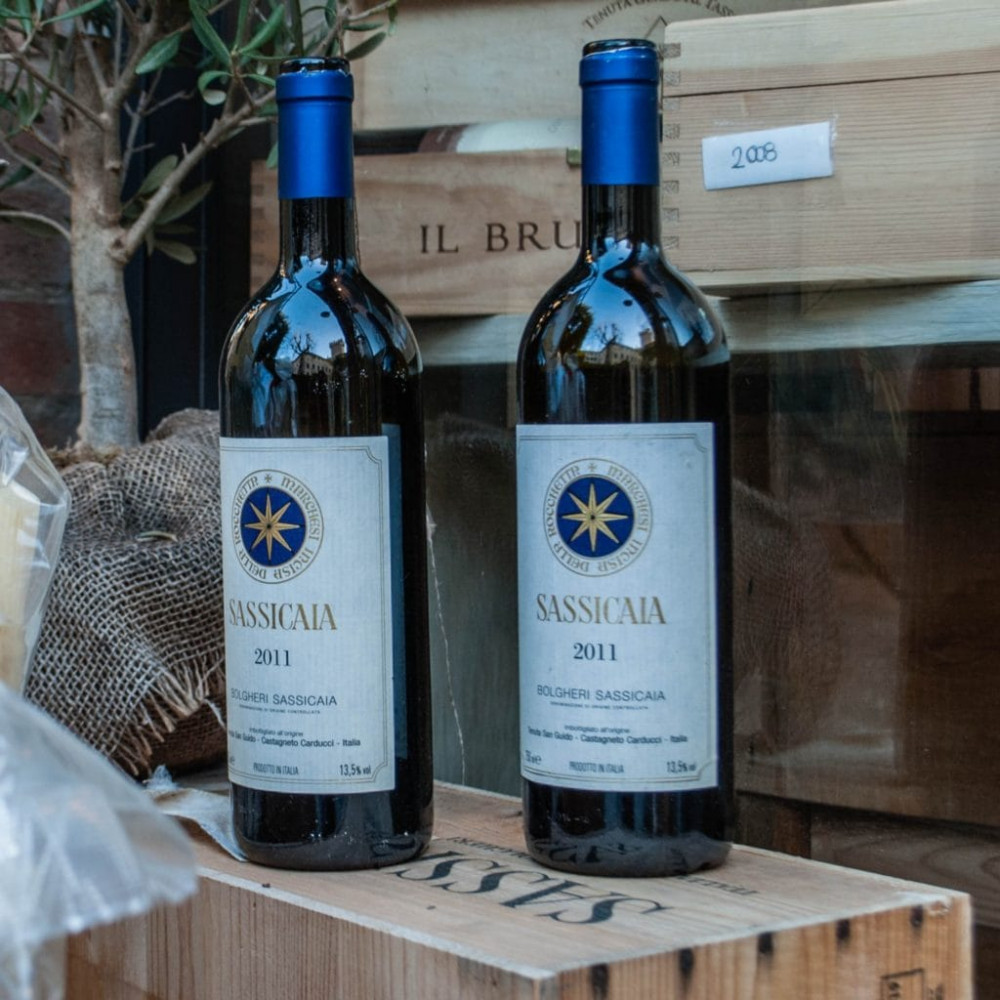
The reputation of the wine grew, and the wine, called Sassicaia, was released to the public in the 1970s, and as it didn’t adhere to any DOC or DOCG wine laws, was labelled simply as Vino da Tavola. The IGT classification had not yet been introduced. The make-up of Sassicaia remains established at around 85% Cabernet Sauvignon and 15% Cabernet Franc.
Tignanello, Solaia and Ornellaia
Shortly after the release of Sassicaia, Piero Antinori’s Tignanello was next to break onto the rogue wine scene. Originally it was labelled as Chianti Classico Riserva in 1970. It was declassified to merely a Vino da Tavola in 1971, when the winemakers refused to add the mandatory lesser-quality white grapes to the blend, instead adding 10% Cabernet Sauvignon and 5% Cabernet Franc.
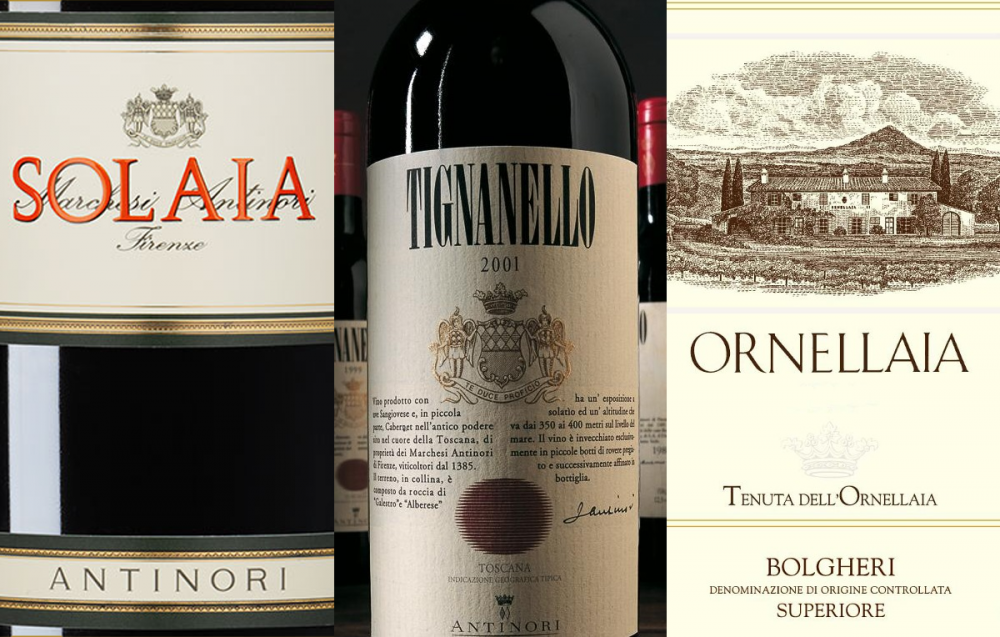
Later in the 1970s, the Antinori’s released Solaia, originally a blend of 80% Cabernet Sauvignon and 20% Cabernet Franc (although now it usually has about 20% Sangiovese) – classified as Vino da Tavola.
Originally owned by Piero Antinori’s brother, Lodovico, Ornellaia was first released in the mid-1980s and quickly became Sassicaia’s main rival in Bolgheri. A blend of 60% Cabernet Sauvignon, with Merlot, Cabernet Franc, and (since 2004) Petit Verdot, the estate is now owned by Frescobaldi.
Goria’s Law
More and more high quality wines in the Vino da Tavola category were being introduced to very high acclaim. The prices skyrocketed as consumers rushed to buy them up. It soon became apparent to the wine authorities that some of Italy’s highest quality and most famous wines were labelled with the lowest quality classification as they did not qualify for DOC status. The use of ‘international’ varieties and small French barriques to age the wine ultimately disqualified them.
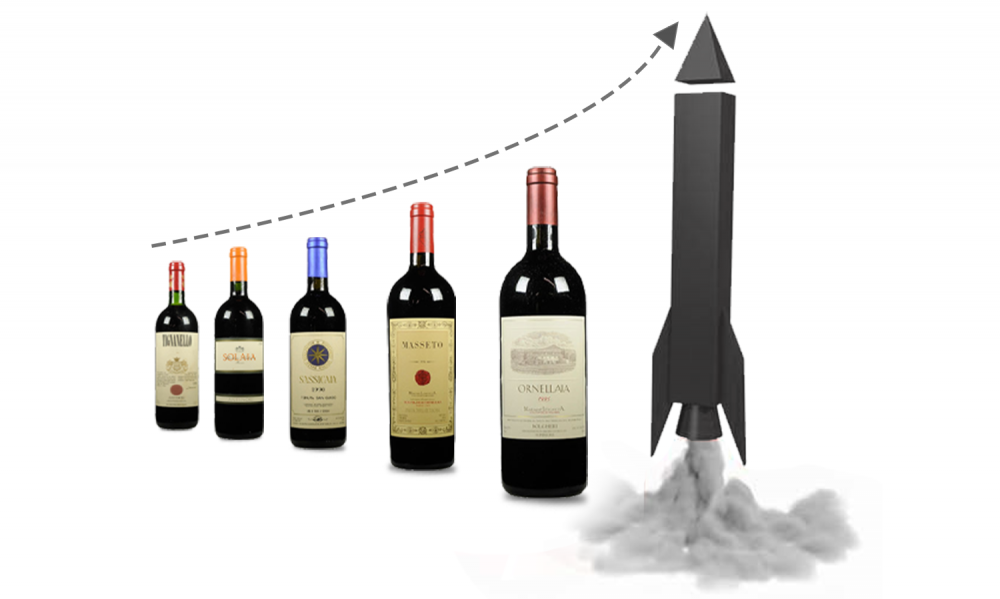
Goria’s Law introduced the IGT designation, which is similar to the French vins de pays. IGT wines could now come from an officially designated geographical wine zone, such as Toscana, but could not claim anything more specific. No village names or vineyards could be identified.
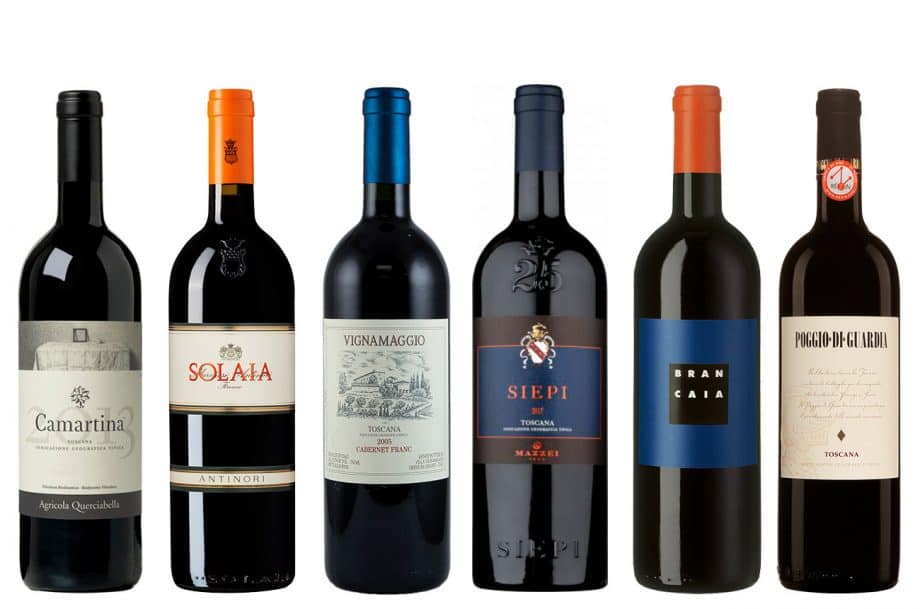
It took a few years for this classification to become accepted as many winemakers were not happy with the fact they could not mention more specific origins of their wines. But, by 1996 they had given in and wines began to appear with the IGT classification on their labels.
Due to the fact that Sassicaia has retained its preeminence among Italy’s top wines, it is no longer classified as an IGT Toscana wine, being granted its very own, very unique DOC: Bolgheri Sassicaia.
Shopping for Super Tuscans
Super Tuscans are still an important part of the Italian wine industry and can be found easily in North America. A visit to the Italian wine section of your favourite wine store will undoubtedly introduce you to several examples.
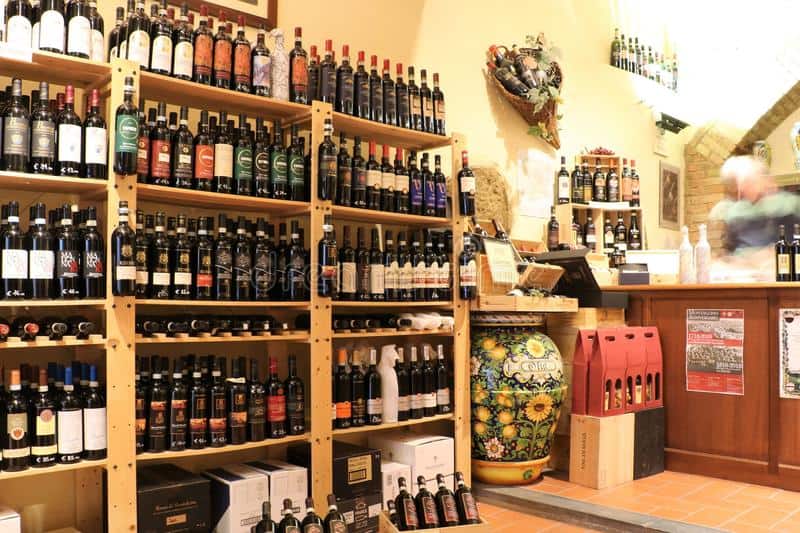
Wines labelled as IGT Toscana and generally (but not always) priced a little higher than others may be so-called ‘Super Tuscans’. Some are very expensive. They are generally blends that include at least some Cabernet and/or Merlot and are usually aged in small French barriques. Indigenous Italian grapes may also be part of the blend.


